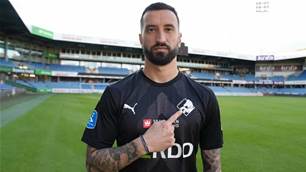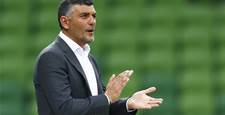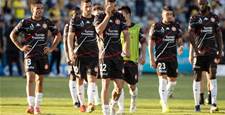OVER the past two decades Australia has been blessed with a generation of players who led the nation to consecutive World Cups. FourFourTwo takes a look at the clubs responsible for this production line of stars and whether we'll ever be able to match the talent we produced in the 'golden era'
“That was the most important thing,” says Postecoglou. “There was always a demand for success. Young players knew you had to be at their best to succeed. It attracted the best young players.
“Players just wanted to play for South Melbourne – like Paul Trimboli. They had a real desire to play for the club. It wasn’t anything by design.”
Postecoglou says the club “didn’t change coaches too often”, which helped, and he experienced coaching from the likes of Brian Garvey, former Socceroo boss Frank Arok and legendary Hungarian Ferenc Puskas.
In the past 20 years South Melbourne has produced a stream of players who have gone on to wear the green and gold.
Some progressed through the club’s junior programs, others just spent formative seasons playing there, but the list is long and it
includes Con Boutsianis, Con Blatsis, Michael Valkanis, Michael Curcija, Daniel Allsopp, Michael Petkovic, Kevin Muscat, Patrick
Kisnorbo and Kristian Sarkies.
THE CITY CONTIGENT
While Melbourne and Sydney have always boasted large catchment areas to attract players, that hasn’t always been the case for Adelaide City. However the club, formerly known as Adelaide Juventus and linked with the Italian community, has always punched above its weight in development.
Former Socceroo Tony Vidmar is one such player to come through the City ranks, along with his brother Aurelio, Carl Veart, Alex Tobin, Angelo Costanzo, and the Aloisi brothers, John and Ross. Vidmar, who joined Adelaide City as a 17-year old in 1987, says it is hard to put a finger on why the club produced so many Socceroos but a lot of credit has to go to the coach Zoran Matic.
“He seemed to get the best out of our players,” says Vidmar. “He assembled quite a good squad. He had a lot of experience. He was years ahead of his time. Everybody worked hard. Everybody knew their roles, and what other players had to do. It was a golden era then.”
Vidmar says Adelaide City had a great core of young talent coupled with experienced pros, such as Joe Mullen and Milan Ivanovic. “The best players were playing locally in those days,” says Vidmar. “Now there’s more than 150 players overseas. The environment, it had nothing to do with dollars, players just wanted to play. I don’t think there’s going to be that generation again. They were unique.”
Damien Mori, the all-time leading Socceroo goalscorer, is the current coach of Adelaide City. Mori, who spent long periods of his playing career at Adelaide City, as well as a stint as a 19-year old at South Melbourne, says both clubs are similar in that they had a great culture, which helped foster talent. “There was pride in wearing the shirt,” says Mori. “A winning mentality.”
STRIKING FOR SUCCESS
The Brisbane Strikers might not have the long history of an Adelaide City or a Melbourne Knights, but they do have a great track record in producing players.
Formed from the demise of Brisbane United in 1993, in the 1990s the Strikers boasted a fabulous blend of youth and experience. Queenslanders Clint Bolton, Kasey Wehrman and Jade North came through the ranks and went on to play for Australia, with the highlight a famous NSL grand final victory over Sydney United in 1997.
In the following years the club was boosted by the emergence of Jon McKain, Shane Steffanutto, Matt McKay and Michael Zullo. Kiwi forward Shane Smeltz was another product of the Strikers. Former Socceroo Kasey Wehrman attributes the club’s strong links with the Queensland Academy of Sport, which many of the Strikers players came through, and its culture of success combining to form a strong breeding ground for youngsters.
“With players like Alan Hunter and Rod Brown, there was a wealth of experience in the team,” says Wehrman, who spent four years with the Strikers. “You learned a lot. There’s still things I learned then that I use today, like the respect of the game. It put you in good stead later in your career.” The influence of coaches Bruce Stowell and Frank Farina was also important. “Frank Farina had the most influence on me, he had done it all before,” says Wehrman.
“He was Queensland boy as well, I could relate to him. He was the kind of coach you didn’t want to let down.” North Queensland Fury assistant coach Stuart McLaren spent several years playing and coaching the Strikers. He credits the influence of Stowell and the balance of the playing roster. “The coaches were in a situation to draw upon some great young talent,” says McLaren. “They were more than prepared to play these young players and give them an opportunity. Bruce knew what was required to play at the national level. There was the right blend of quality, experienced players with talented young players.”
THE AIS AFFECT
The contributions of the big six NSL clubs in player development in the past 20 years is something not to ignored. But, neither can the impact of Ron Smith and the AIS program.
From 1986 to 1996 Smith was the head coach at the AIS, nurturing the likes of Mark Viduka, Lucas Neill, Craig Moore, Joe Simunic, Kevin Muscat, Ned Zelic and Steve Corica. Remo Nogarotto is a former chairman of Marconi, Soccer Australia, Northern Spirit and a former director of football for the Newcastle Jets. He describes Smith as “the doyen of the football development community in Australia”.
“He introduced science,” says Nogarotto. “He didn’t try and over-engineer players. He finessed them. He is sorely missed.” Kevin Muscat is one player who went through the AIS under Smith and speaks highly of him. “I made the 1991 Youth World Cup because of Ron Smith,” says Muscat. “He adapted my game. If it wasn’t for Ron Smith adapting me from midfield to fullback, I wouldn’t have made the team. I’m very grateful, without a doubt. Someone of Ron Smith’s calibre, he’ still renowned for his level of coaching.”
The simple fact is, there’s no single factor why Australia produced such a rich pool of footballing stars in the past 20 years. There is no one golden reason why certain clubs experienced such strong bouts of player production. Great coaching undoubtedly had a role, as did the influence of the AIS in preparing youngsters for professional football. But players also possessed the hunger and drive to succeed and to break into the national team.
With no A-League, they were forced to go overseas to make a living and further develop. Timing and luck, undoubtedly, also played some small part. The simple lesson is that success breeds success, and cultures of excellence, hard work and encouragement are crucial. “Sport, like most things in life, is cyclical,” says Nogarotto. “The dream development decade started in 1985, and it closed in 1995. The game was blessed with the development of a number of outstanding footballers, attributed in part to coaching, and development techniques. It was a perfect storm of development. Every major club had a golden run of some outstanding young talent. Arok, Blanco, Thompson and Scheinflug were the vanguard of developing young football talent in Australia. Those four coaches, and Zoran Matic, were all true believers in developing young talent.”
It’s not just the six clubs profiled in this story that have contributed to the national team in the past two decades. Clubs across Australia have played their part. But from 1990 until 2005 there was less money in the game for development, for coaching and sports science, there were fewer opportunities for players and fewer pathways for aspiring professionals.
Today we have a fully professional A-League, a youth-league set up as well as numerous academies, the AIS and the traditional state league clubs. Despite the lack of resources in the past, a golden generation of talent was produced and it is debatable whether we will see the like of it again.
“It was a combination of all things,” says Bernie Mandic, manager of Harry Kewell and a former coach at Sydney Olympic. “There was a basic, fundamental road path for players to take. There are extraordinary individuals who haven’t been properly recognised. Ron Smith is not replaceable. Frank Arok, he pioneered the art of the shoestring budget and giving youngsters a go. There’s David Lee. Very special, dedicated people who put the game first. We’ve learnt nothing from the golden generation, which is the sad thing about it.”
This article appeared in the December 2010 issue of FourFourTwo magazine. To buy back copies of this issue call 03-8317-8121 with a credit card to hand.
Related Articles
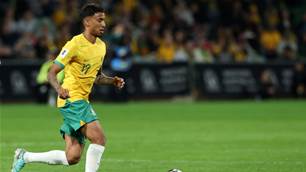
Socceroos midfielder embraces move to England
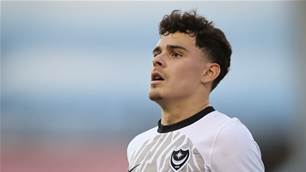
Cardiff City snap up sought-after Socceroos starlet
